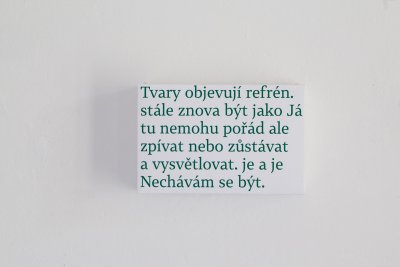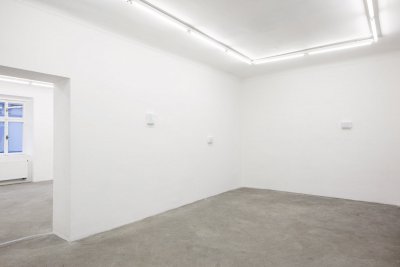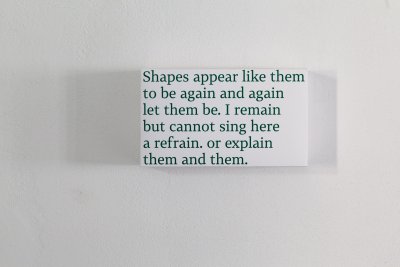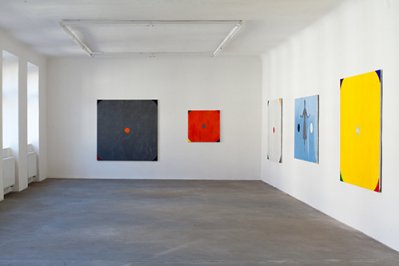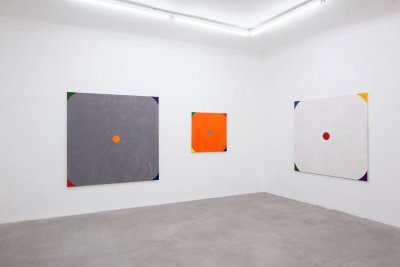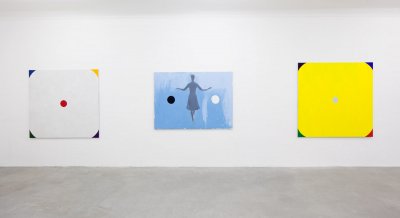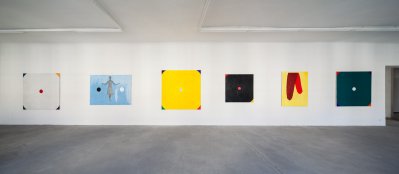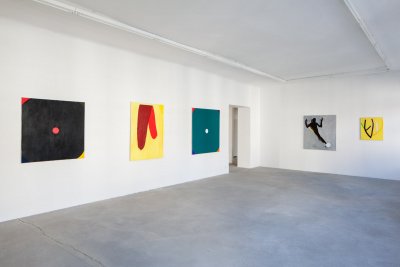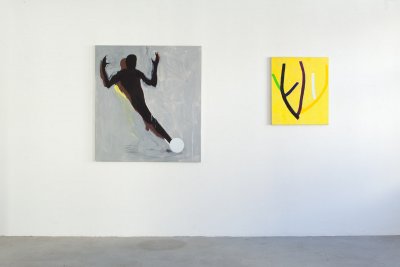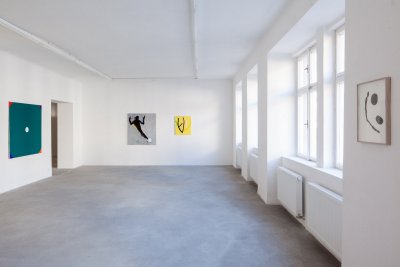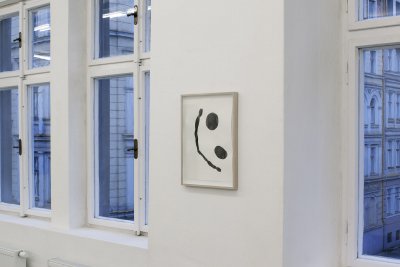Lenka Vítková: Refrain
curated by Edith Jeřábková
Wed March 26, 6pm
A guided tour of the exhibition with the artist and the curator.
opening on Monday March 10th at 6pm
12. 3. – 19. 4. 2014
“A natural action is it that man speaks;
But whether thus or thus, doth nature leave
To your own art, as seemeth best to you.”
If we take Dante’s claim at face value, it reveals one thing to us: anyone
can shape a word as he sees fit; the fact of language is not thereby challenged.
Speech is born forever; it is enough to utter a sound and endow it with a
meaning according to ones own decision. In the sense of Dante’s triplet, that
is, it is no longer a matter of the birth of language from non-language, but
rather of the simple configuration of phonemes progressing through the universe.
Language is not born in time, but rather in space – it lacks a past, and
hence content. Sense is equivalent to sensus, sensation, feeling, perception;
“expressing sense” is a mere pretext for constructing a corpus (host), the
sense of which (communes hominum sensus) is to exhibit a form (morfé).
Patrik Ouředník, Jak se Pantagruel seznámil a Panurgem, jehož pak miloval po
celý život (O třech imaginárních jazycích Francoise Rabelaise) [How
Pantagruel met Panurge, whom he then loved all his life (On the three imaginary
languages of Francois Rabelais)]
Under certain circumstances, the image could be a counterweight to
performative media. Obviously, we would have to forget about the example of
Pollock and others. In the text “Exhaustion and Exuberance”, Jan Verwoert
seeks an answer to the tense, forced and self-motivating performativeness of
lifestyle that resonates in today’s phenomenon of performance. With the help
of Kierkegaard and the “either/or” strategy he defines, translated into the
language of contemporary politics as “with us or against us”, he describes a
situation in which society is constantly faced, by means of political and
ideological will, with a double or single choice. Verwoert finds a way of
breaking out of this diabolical dilemma of the fatal choice: the
straightforward, punkish “I can’t”, which is expanded by the historical
examples of Július Koller’s anti-performances and anti-happenings, the Sex
Pistols’ musical performances etc.
It seems as if this compulsion towards everyday performance has hardened
Lenka’s unwillingness to be its instrument. And painting itself seems to
resist this incessant cycle – many artists do not paint when it’s not
going right and at other times a painting emerges during a period that was not
set aside for it. Some images can be created only thanks to the images of others
or they appear sooner than the society they belong to, and therefore have to
wait some time for their unveiling. A disparate conception of time, then, is
the first important aspect of Lenka’s paintings. And as for the exhibition
being called “Refrain”, I want to say clearly that a certain time is
coming – for the society of images, people, words, the exhibition,
presentation. It is a time of repetition, fulfilment and denseness and then
gaps, inhalations and silence, a performativity linked to the body and the
breath rather than to a Google calendar or e-mail inbox. There is nothing extra
in it, even though the refrain constantly repeats itself. And even though it is
a cliché to speak of ritual, that cliché must be uttered too.
“Shapes appear again and again like a refrain, but I cannot remain here to
sing them or explain them,” Lenka says in her text. If I were to give a gift
of a word to Lenka, it would be “decision”. The distribution of shapes in
this set of images is final for Lenka, but it does not have to be for others. It
is commonly said of fine art that it is not a temporal medium, which serves
merely as an auxiliary definition separating it from musical and performative
forms. Apart from the time its creation takes, a picture also demands reading or
perceiving. Communication and emotions are painted into the picture, and
therefore its author can go away from it at a certain point and let it be
(although not immediately after it is finished). It is also often written that
we have lost our ability to read and perceive the “frozen” image, but
perhaps we are again tempted to try that unclearly clear presence that the still
image offers. In the exhibition, some of the pictures come back to us like a
refrain. Similar shapes and scenes return; they are here, but Lenka does not
want to compose them further and find for them a place and colours. She has
decided: she lets the shapes that came in this composition be, for someone else
to sing or explain. The alternative would be to slip into pulverization, because
variety is not enjoyment, but a balance of life, a natural and clear
condition.
The present shapes do not actually represent pieces of something. They are whole
circles that simply didn’t fit on the canvas and yet are there, caught in a
reduction in the middle. That core speaks of a vital whole with a similar shape,
a different colour and a very restless outline. Maybe it is an attempt to depict
an essence, a fragile, reversible condition, a target with a single possibility,
a simplified mandala, the rotation of which is inconsistent with the square of
the modernist icon. The images that return want, with the help of the least
number of shapes, to speak of the world, of the relationships between big and
small forms, of concealment, of the centre and of the diversity of the edge,
which, however, also has its requirements. They want to speak and not prove,
therefore they have imprecise outlines, therefore their construction does not
use measuring instruments. Lenka tries by means of her natural abilities to
capture a circular composition and focus the centre as a challenge to the senses
and experience, which have become quite lazy in the digital age, which have lost
the responsibility and the art of relying on themselves.
The proportions of the story and the refrain are reversed in the exhibition.
There are only a few pictures here, which take on a particular look through
their figuration. We may surmise something about a dancing woman, whose
balancing of circular forms is reminiscent of Lenka’s reason for painting.
But we do not necessarily have to search for prototypes. It is surely enough to
know that they quite certainly come from this world, from this culture. The
returning circular shapes may be, on the other hand, from elsewhere, a crack
into another reality.
The author’s texts on the walls of the first room differentiate the refrain
in meaning; they recite the poem from the refrain. They confirm Lenka’s bond
to the word, speech and language and to Gertrud Stein and her successors.
Although they precede the paintings in their placement in the exhibition, they
are not intended as a support for them, but rather an equal partner. As in Marek
Meduna’s previous exhibition in SVIT, here the text influences the image
influences the text, only in a much lower density, only as much as is essential
and that is enough. A decision to write nothing more, paint nothing more,
install nothing more. Lenka’s reduction is not an aesthetic one and is not
merely an extension of reductive trends in art. If it can stand comparison, then
perhaps with Chinese ink painting or Japanese pottery, which can be rendered
precise only before the act of creation. Then there follows only confidence,
“Let it be” and “Bang! Bang! Bang!”.
